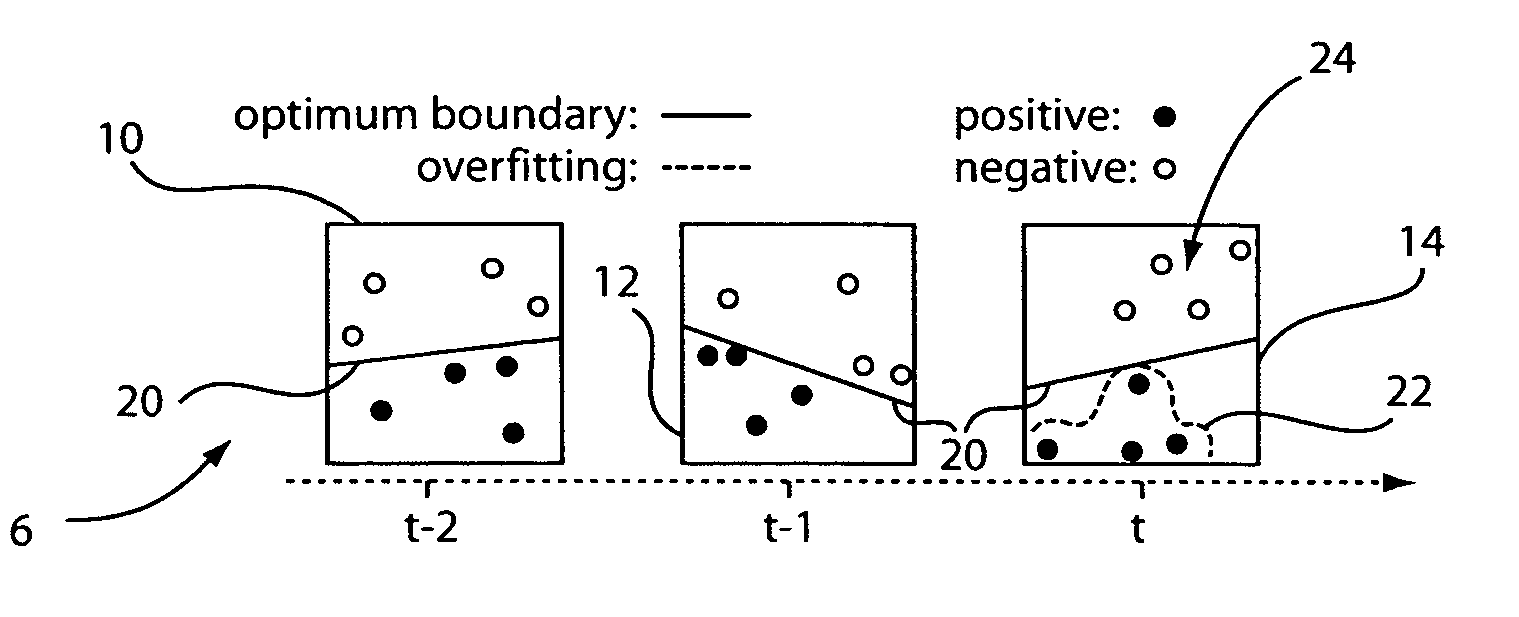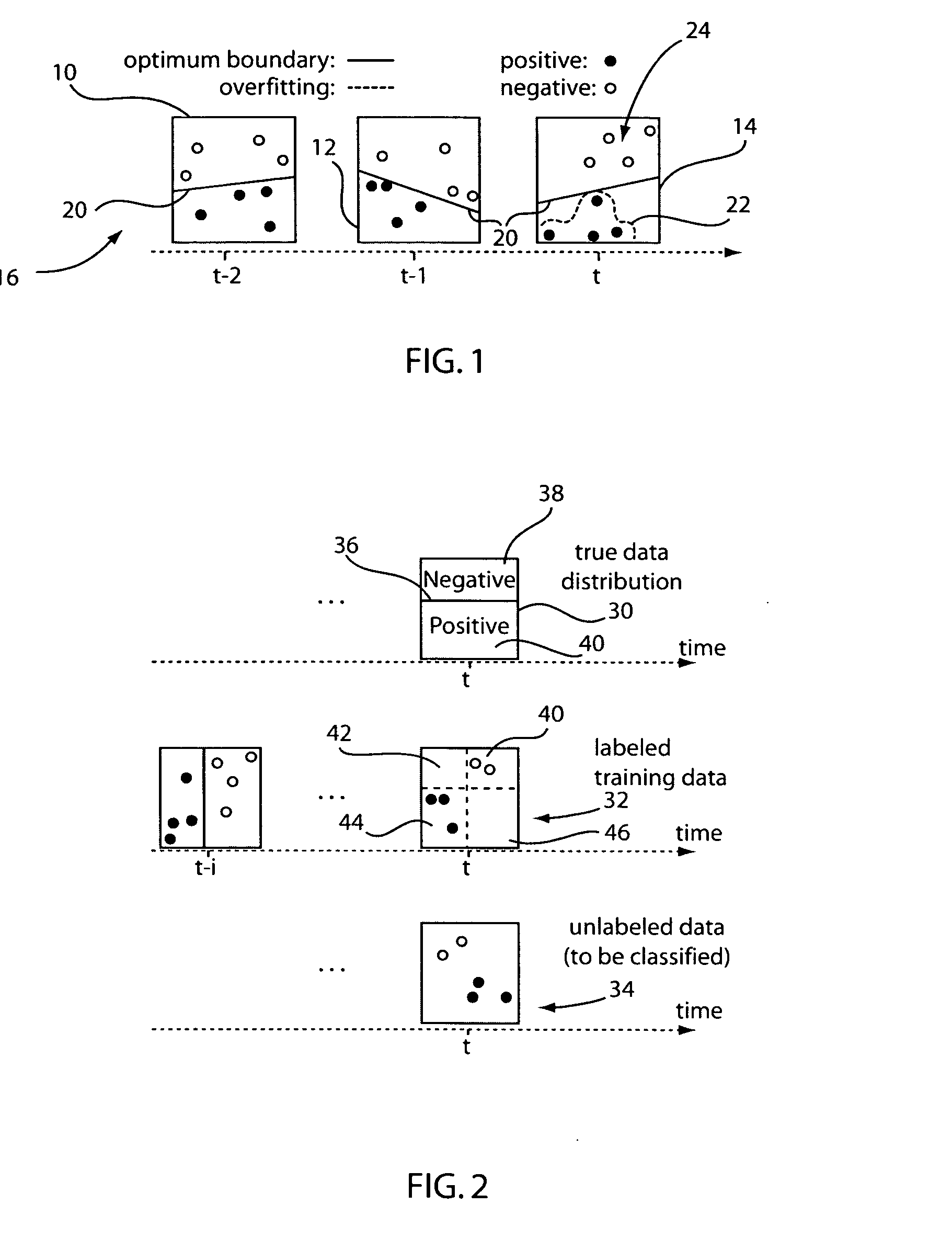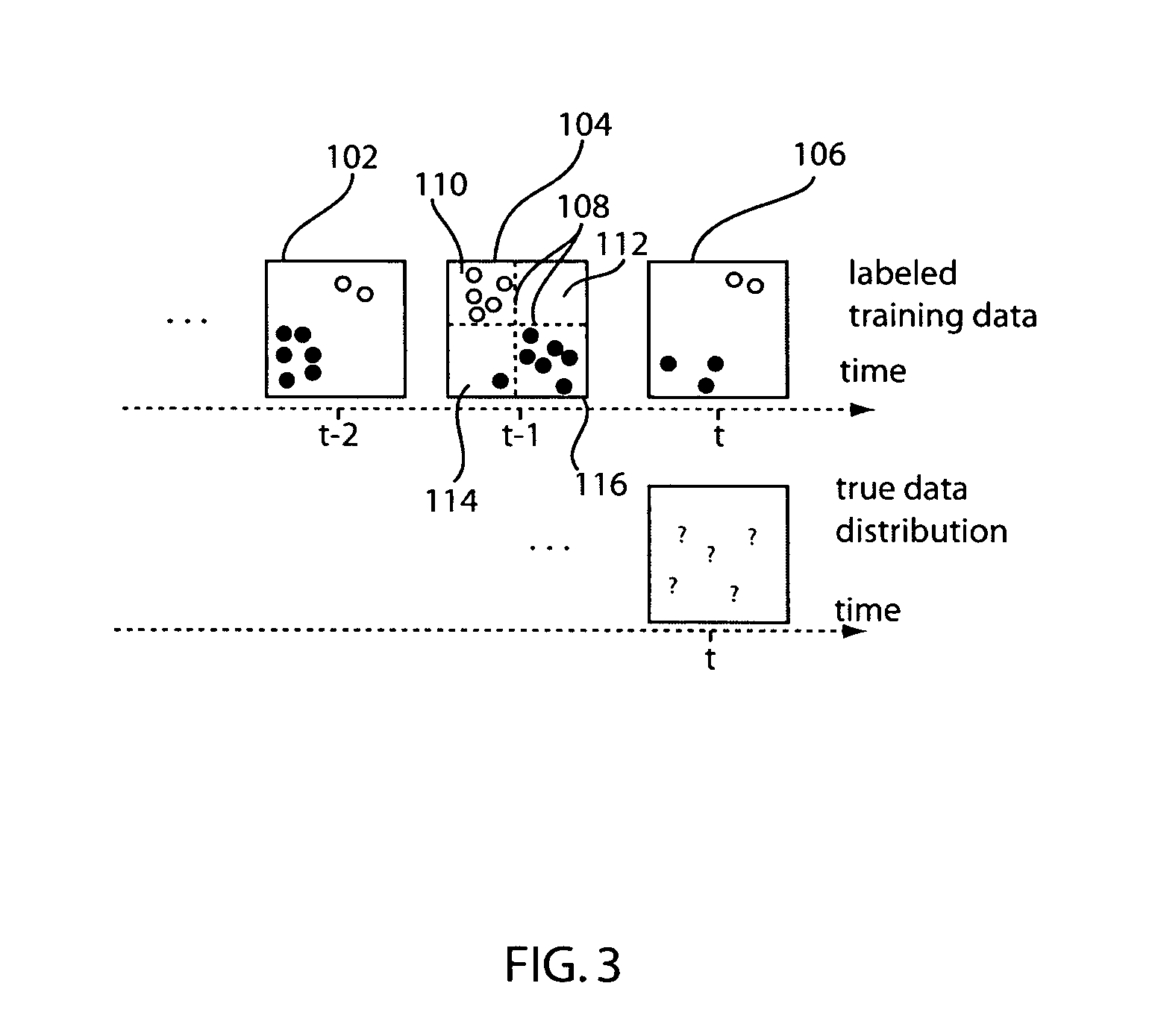System and method for learning models from scarce and skewed training data
a training data and model learning technology, applied in the field of data stream processing, can solve the problems of affecting the accuracy of a classifier, too specific models, and new challenges in mining data streams,
- Summary
- Abstract
- Description
- Claims
- Application Information
AI Technical Summary
Benefits of technology
Problems solved by technology
Method used
Image
Examples
Embodiment Construction
[0026]Mining data streams of changing class distributions is one important aspect for real-time business decision support. A stream classifier should evolve to reflect the current class distribution. This poses a serious challenge: relying on historical data may increase the chances of learning obsolete models and learning only from the latest data may lead to biased classifiers, as the latest data is often an unrepresentative sample of the current class distribution.
[0027]The problem is particularly acute in classifying rare events, when, for example, instances of the rare class do not even show up in the most recent training data. In accordance with present principles, a stochastic model is employed to describe concept shifting patterns and formulate the problem as an optimization problem. The optimization problem may be stated as: from the historical and the current training data that have been observed, find the most-likely current distribution, and learn a classifier based on t...
PUM
 Login to View More
Login to View More Abstract
Description
Claims
Application Information
 Login to View More
Login to View More - R&D
- Intellectual Property
- Life Sciences
- Materials
- Tech Scout
- Unparalleled Data Quality
- Higher Quality Content
- 60% Fewer Hallucinations
Browse by: Latest US Patents, China's latest patents, Technical Efficacy Thesaurus, Application Domain, Technology Topic, Popular Technical Reports.
© 2025 PatSnap. All rights reserved.Legal|Privacy policy|Modern Slavery Act Transparency Statement|Sitemap|About US| Contact US: help@patsnap.com



